Chimpanzee Trekking In Budongo Forest
Chimpanzee Trekking In Budongo Forest
A 4–5-hour drive northwest of Uganda’s Capital, Budongo Forest ranks among Africa’s best and most underrated chimpanzee trekking destinations. Part of the large Murchison Falls Conservation Area, this huge (825km2) rainforest reserve is a place where biodiversity thrives and history whispers through the trees. The forest reserve first received conservation attention in the 19th century. It once served as a royal hunting ground for Bunyoro kings.
Today, Budongo comprises six distinct forest blocks: Siba, Waibira, Busaju, Kaniyo-Pabidi, Biiso, and Nyakafunjo, all managed by the Uganda National Forestry Authority (NFA). Dominating the Budongo Forest is a canopy of Uganda ironwoods, which provide a shelter for a diverse assemblage of forest monkeys, birds, and butterflies.
The main attraction, however, is the chance to embark on chimpanzee trekking in Budongo Forest. Tracking these fascinating creatures – who share almost 99% of their DNA with us – is an unforgettable experience. While finding them in the wild can be challenging, that’s part of the adventure. If you are lucky enough to encounter them, observing chimpanzees in their natural habitat is a highlight of any Uganda safari.
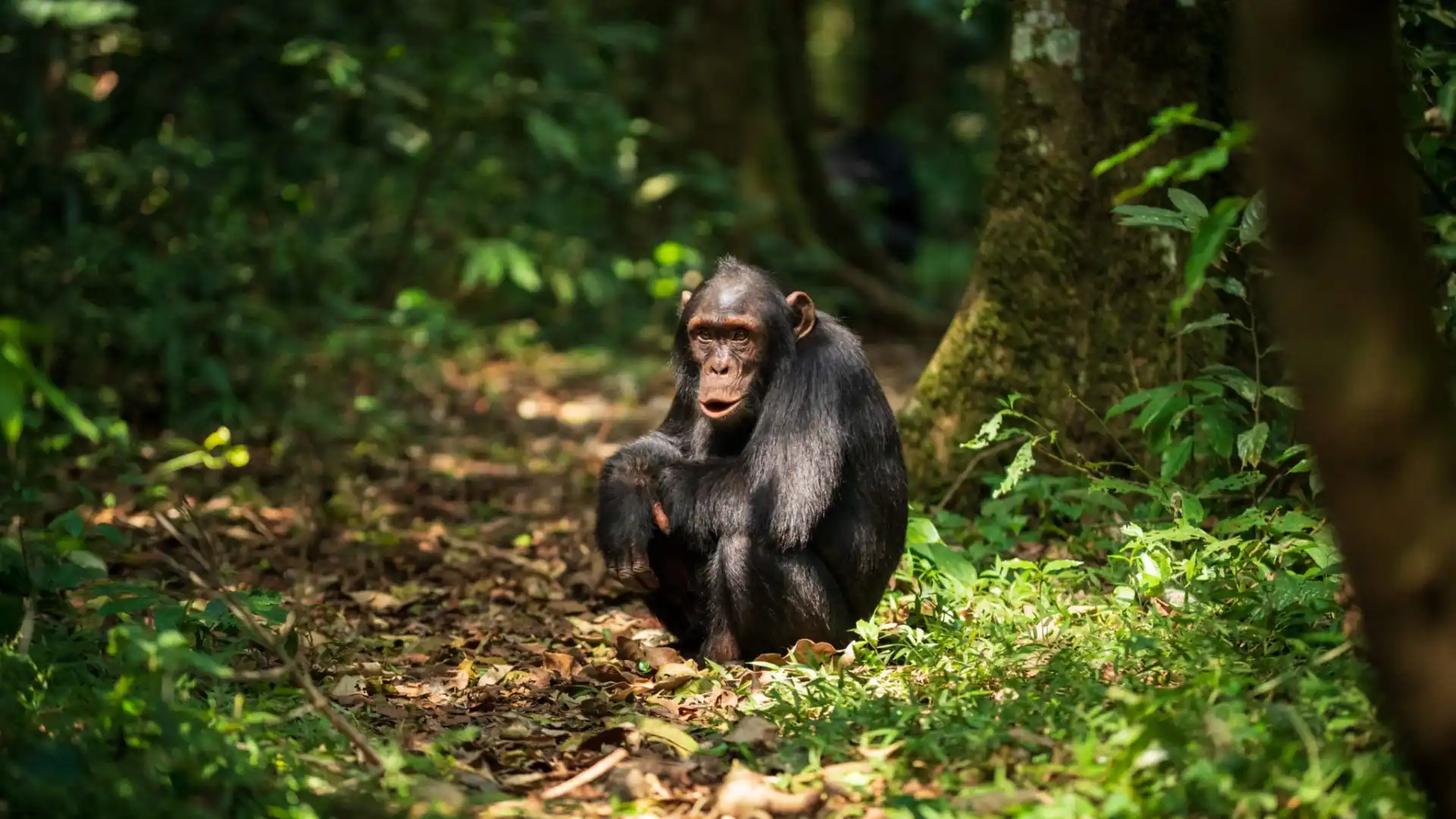
Flora and Fauna of Budongo Forest
Budongo Forest is a magical place, with its towering Uganda ironwoods creating a lush canopy that shelters a wealth of life. Among the giants, East African mahogany trees stand proud, reaching heights of up to 80 meters.
The forest is also home to a variety of remarkable trees, including the drum tree, wild mango, African teak, and the vulnerable tiama. Together, they form a canopy that bathes the forest floor in soft, dappled light, giving the forest an almost mystical atmosphere.
The wildlife in Budongo is just as captivating. With over 366 bird species, it’s a paradise for birdwatchers, featuring 60 rare Central African species found in only a handful of places in East Africa. The forest is also alive with primates—eastern chimpanzees, black-and-white colobus monkeys, red-tailed monkeys, and blue monkeys swing through the trees.
Grey-cheeked mangabeys, olive baboons, potto, and galago species add to the forest’s vibrant population. On the forest floor, the elusive chequered elephant shrew scurries through the underbrush, while high above, Africa’s largest tree squirrel, the forest giant squirrel, leaps between branches, adding a lively touch to the canopy.
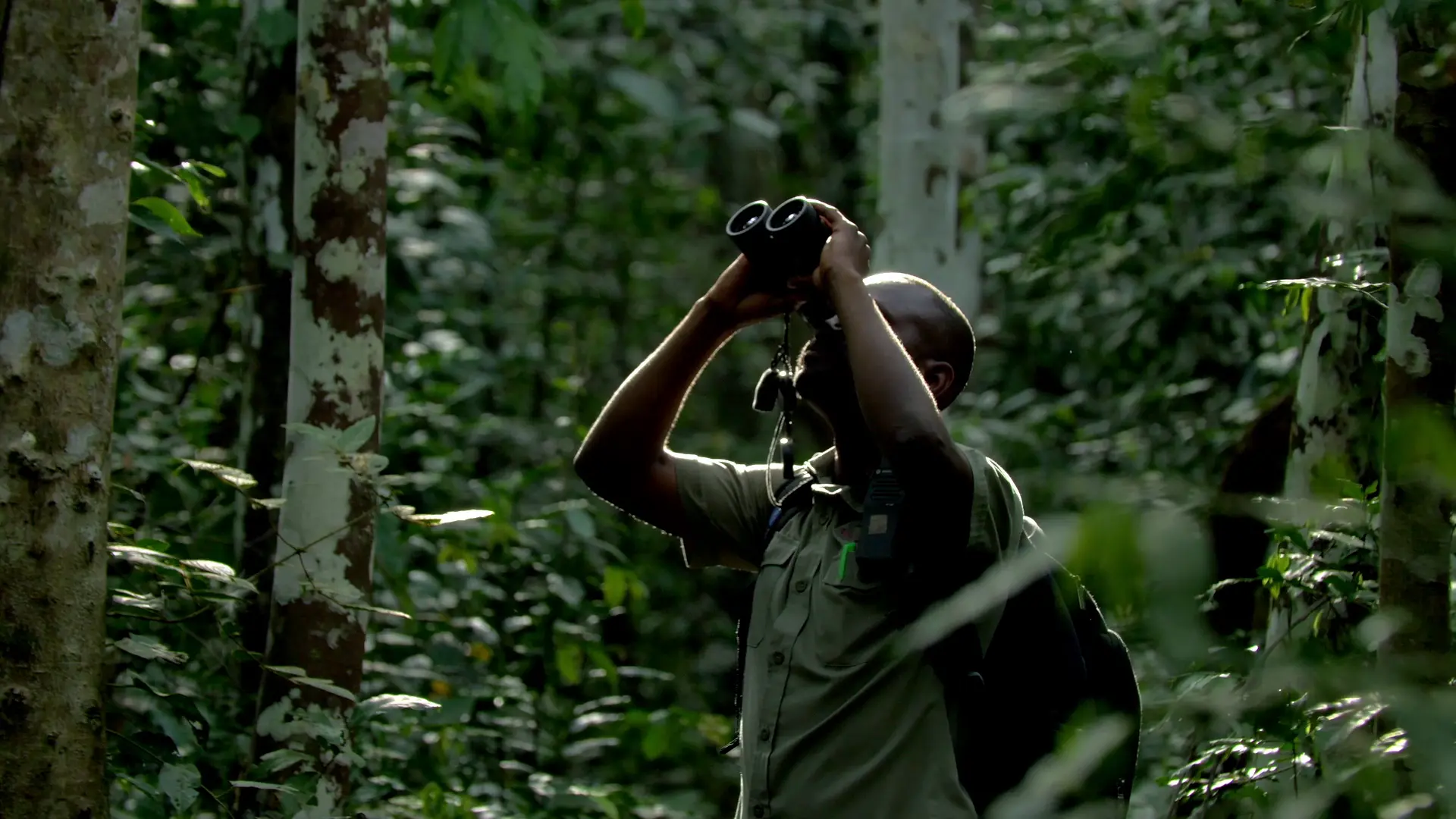
Chimpanzee Trekking in Budongo Forest
Budongo Forest is home to around 800 wild chimpanzees spread across several communities, each with varying degrees of interaction with humans. The Waibira, Sonso, and Kaniyo-Pabidi communities are actively monitored and studied by the Budongo Conservation Field Station. Currently, chimpanzee trekking in Budongo Forest focuses on the Kaniyo-Pabidi community.
- The Sonso community has more than 85 chimpanzees and was the first group to undergo habituation, starting in 1990. This community is not open to tourists and continues to be involved in ongoing research.
- The Waibira community consists of 100 to 120 chimpanzees, with 76 individuals known by name. Habituation began in 2011. Like the Sonso group, the Waibira community is not open to tourists and is part of research projects.
Visitors can trek to see the Kaniyo-Pabidi community, which has over 100 chimpanzees. This group lives between Budongo Forest Reserve and Murchison Falls National Park. The Jane Goodall Institute started habituating them, and since 2009, the Budongo Eco Lodge has managed the program. Treks can last between 30 minutes and 4 hours, covering up to 8 kilometers. Once the chimpanzees are located, trekkers can observe them for up to an hour as they play, feed, and rest.
In addition to the Sonso, Waibira, and Kaniyo-Pabidi communities, there are three other chimpanzee groups in Budongo: the Busingiro, Nature Reserve, and Waisoke communities. These groups are unhabituated and are not part of the trekking program
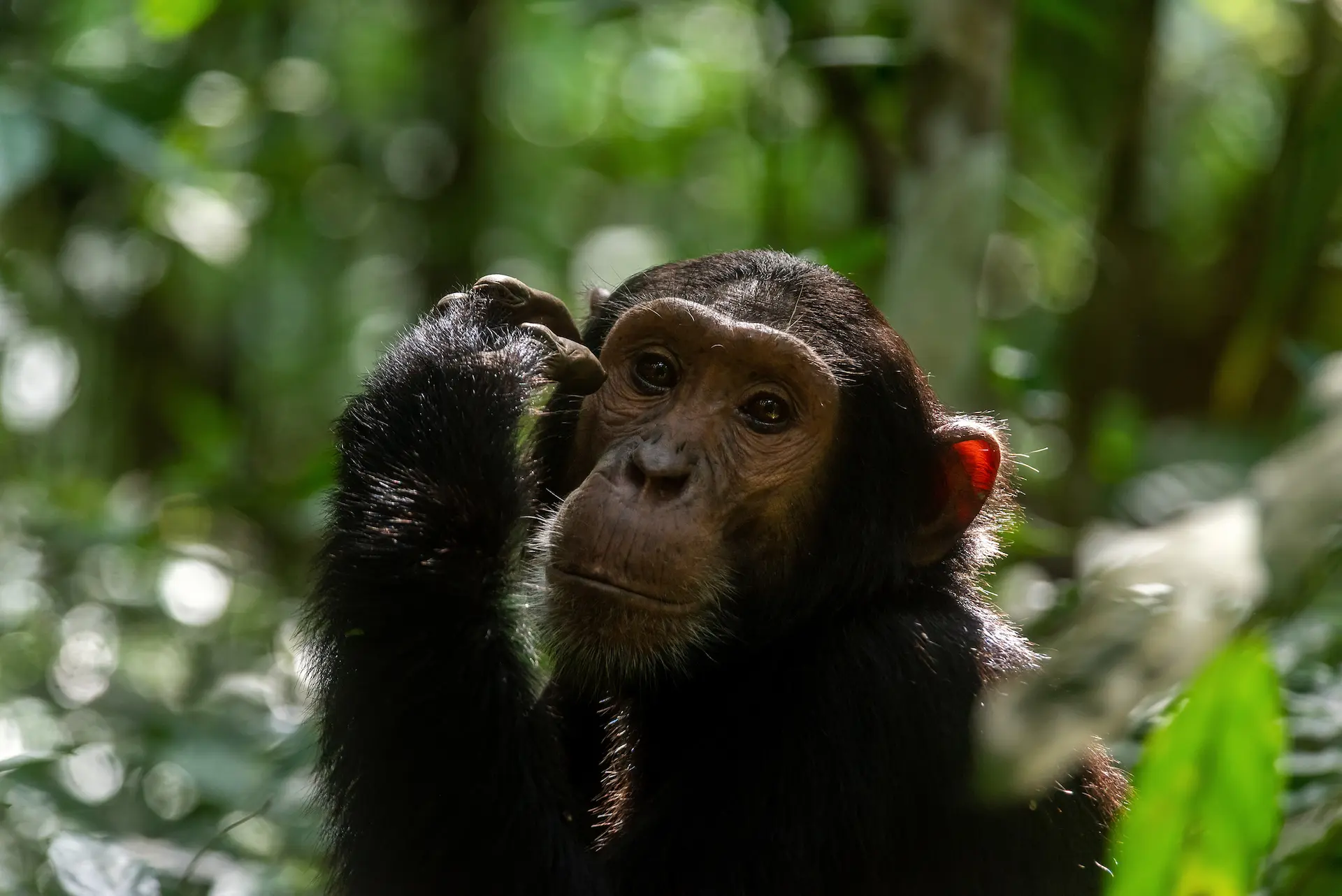
Chimpanzee Habituation Experience in Budongo Forest
Budongo offers a unique chimpanzee habituation experience. Visitors can help acclimate wild chimpanzees to human presence.
This involves tracking an unhabituated troop for several hours with professional guides, while observing and documenting their behavior. Unhabituated troops are harder to find. They roam deeper into the forest. Sometimes, locating them can take all day. But the challenge adds excitement to tracking and encountering these iconic animals in the wild.
Habituating a troop takes 2–3 years, and this experience helps support that process. This activity is perfect for those who want to spend more time observing chimpanzee behavior. Permits are more expensive and not available during the peak season (July to September), when regular trekking permits take priority.
With this permit, visitors can spend up to four hours with the chimpanzees. This offers a deeper understanding of their daily routines. It’s a rare opportunity to watch them feed, rest, and communicate in their natural habitat.
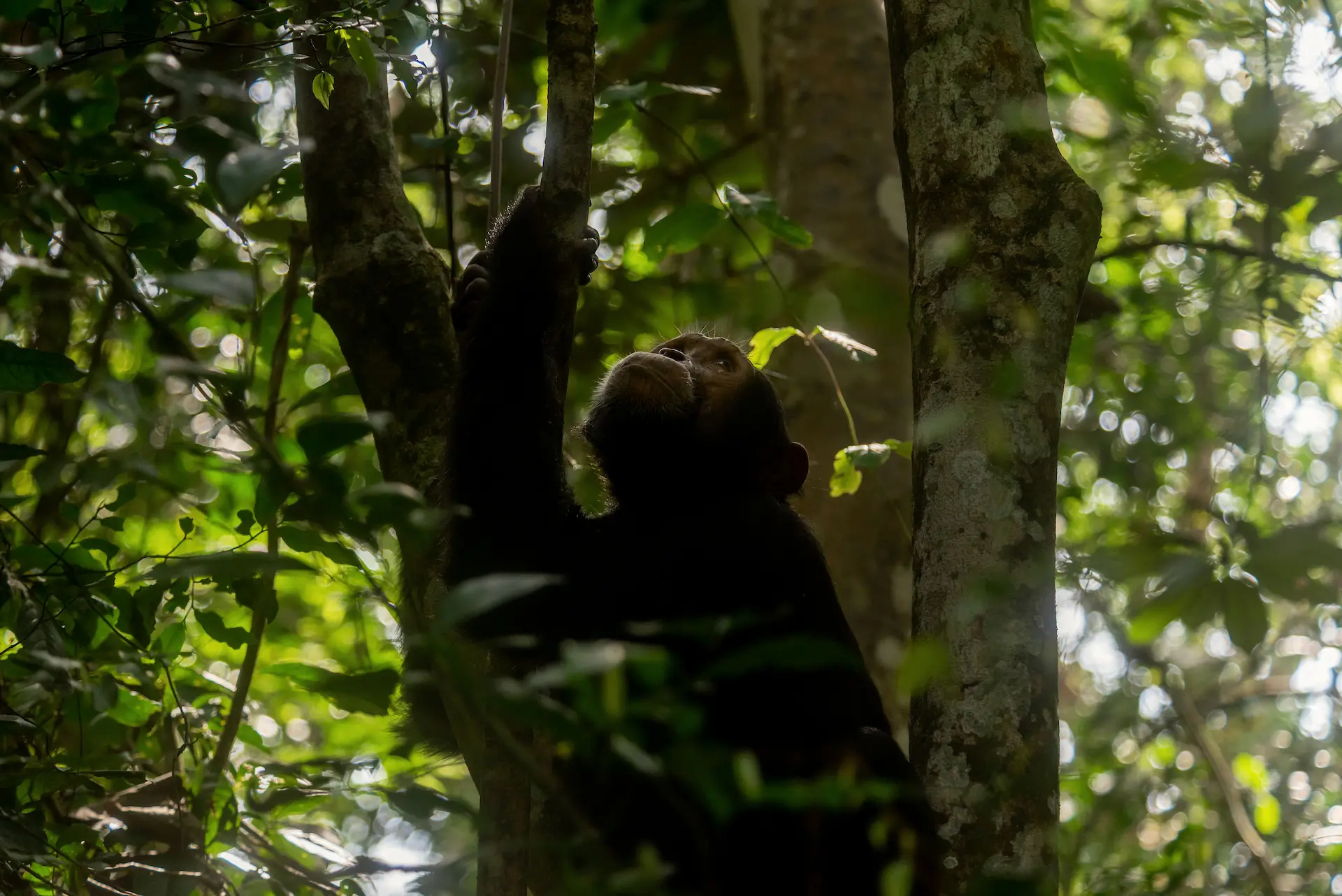
Best Time to Visit Budongo Forest
The best time to visit Budongo Forest for chimpanzee trekking is during the dry seasons, which typically run from December to February and June to September.
The chimps are more active during these months, and the forest paths are easier to navigate. However, during the rainy season (March to May and October to November), the forest can become slippery, and trekking may be more challenging.
Why Choose Budongo Forest for Chimpanzee Trekking in Uganda?
Chimpanzee trekking in Budongo Forest is one of the best in Uganda. While the success rate for spotting chimps isn’t as high as at Kibale Forest National Park, it still compares well to most other locations.
What makes Budongo truly stand out is its flat terrain and well-maintained footpath network. This is perfect for travelers who aren’t in peak physical condition. There’s no need to battle through thick undergrowth or navigate steep, slippery slopes when tracking the chimps.
Budongo also offers another perk: it’s about 40% more affordable than Kibale Forest. And because it’s a lesser-known chimp trekking destination, it attracts fewer visitors. This makes it less likely you’ll run into large groups of trekkers, giving you a more peaceful, intimate experience in the forest.
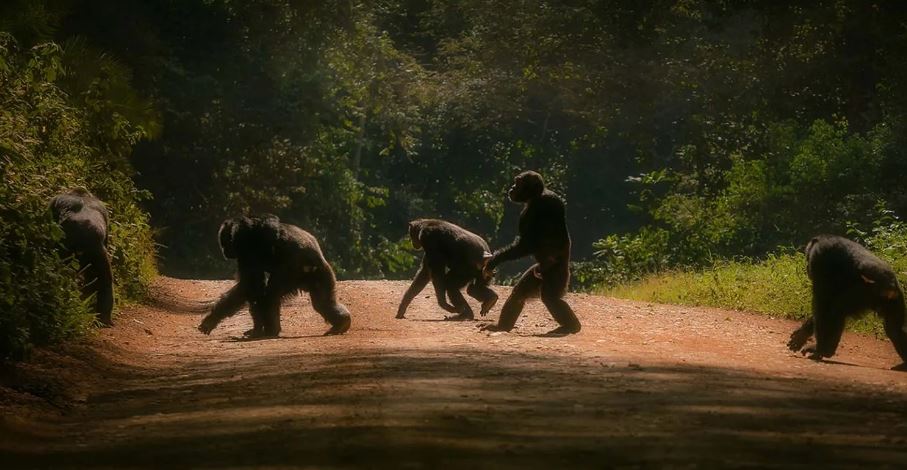
Accommodation Options in Budongo Forest
There are several eco-lodges and tented camps on the outskirts of Budongo Forest, offering a close-to-nature experience. These include Budongo Eco Lodge (will be replaced by Pabidi Lodge Budongo under construction) and other nearby accommodations, which provide a range of facilities and guided treks.
Staying near the forest allows you to immerse yourself in the natural surroundings, with the sounds of wildlife and the forest itself just outside your door.
Combine Budongo Forest with Other Ugandan Safari Destinations
Chimpanzee trekking in Budongo Forest is a perfect addition to any adventure that includes Murchison Falls National Park or Ziwa Rhino and Wildlife Ranch.
Whether you’re planning a quick trip from Kampala and Entebbe to Murchison Falls or a longer safari heading southwest to Kibale, Queen Elizabeth, or Bwindi Impenetrable National Parks, Budongo is an ideal stop.
What makes Budongo so convenient for Murchison Falls visitors is its location. Though the two are considered separate destinations, the chimp trekking trailhead and ecolodge are right along the main road to Murchison Falls. In fact, the trailhead is now situated inside Murchison Falls’ main entrance gate, so you can easily squeeze in a chimpanzee trek on your way to or as a day trip from any lodge or camp in the park.
Budongo and Murchison Falls complement each other beautifully. While Budongo is home to chimpanzees and forest species, Murchison Falls brings the chance to see savannah giants like lions, leopards, elephants, buffalo, and giraffes. And don’t forget the breathtaking Murchison Falls themselves—one of Africa’s most spectacular waterfalls—set on a stretch of the Nile River filled with hippos, crocodiles, and waterbirds.
If you’re heading to or from Entebbe, be sure to stop at Ziwa Rhino and Wildlife Ranch. It’s the perfect opportunity to track Uganda’s only rhinos on foot!
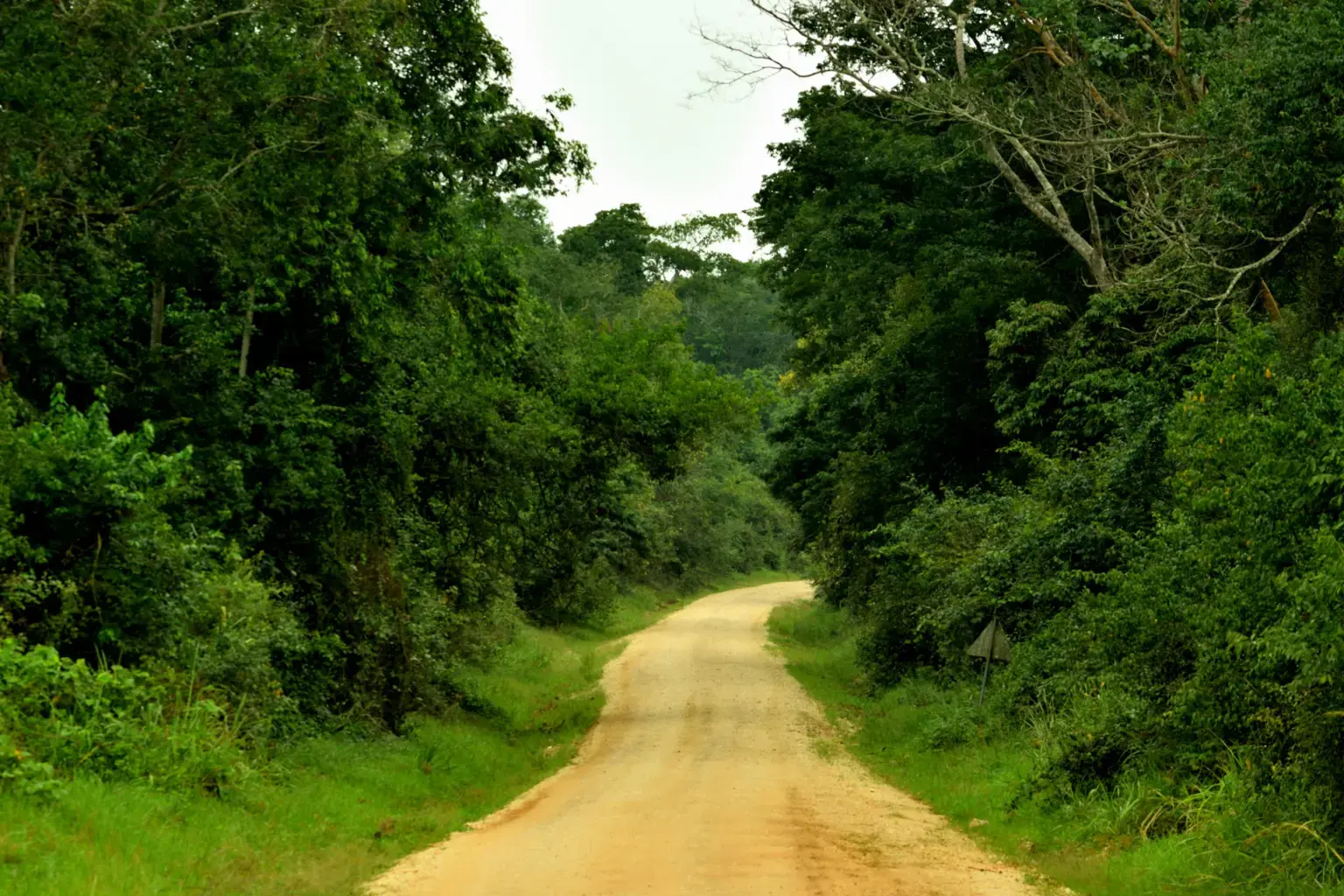
Safety and Tips for Chimpanzee Trekking in Budongo Forest
Chimpanzee trekking in Budongo Forest and across Uganda is safe.
The chimps in places like Budongo are used to humans. No visitors have been injured by chimps so far. However, adult male chimps are much larger and stronger than humans. There’s also a small chance of encountering elephants or buffalo in the forest.
- Pay attention during the pre-trek briefing and follow the guide’s instructions carefully.
- The minimum age for trekking in Budongo and other locations in Uganda is 12 years old.
- The most common risk is tripping or twisting an ankle, so wear sturdy shoes and consider bringing a walking stick for extra stability.
Planning Your Visit to Budongo Forest
The nearest town to Budongo is Masindi, located about 20 km east of the forest. It’s easily accessible by bus or private car. For a quicker option, you can fly from Entebbe International Airport to Pakuba or Bugungu airfields in Murchison Falls, reducing your travel time to Budongo to about an hour.
To make the most of your visit, consider booking a guided tour with an experienced guide. They’ll share their knowledge of the forest’s rich flora and fauna and ensure your safety, especially during activities like chimpanzee trekking. Remember, securing a permit is essential before you set off on your adventure in Budongo Forest.
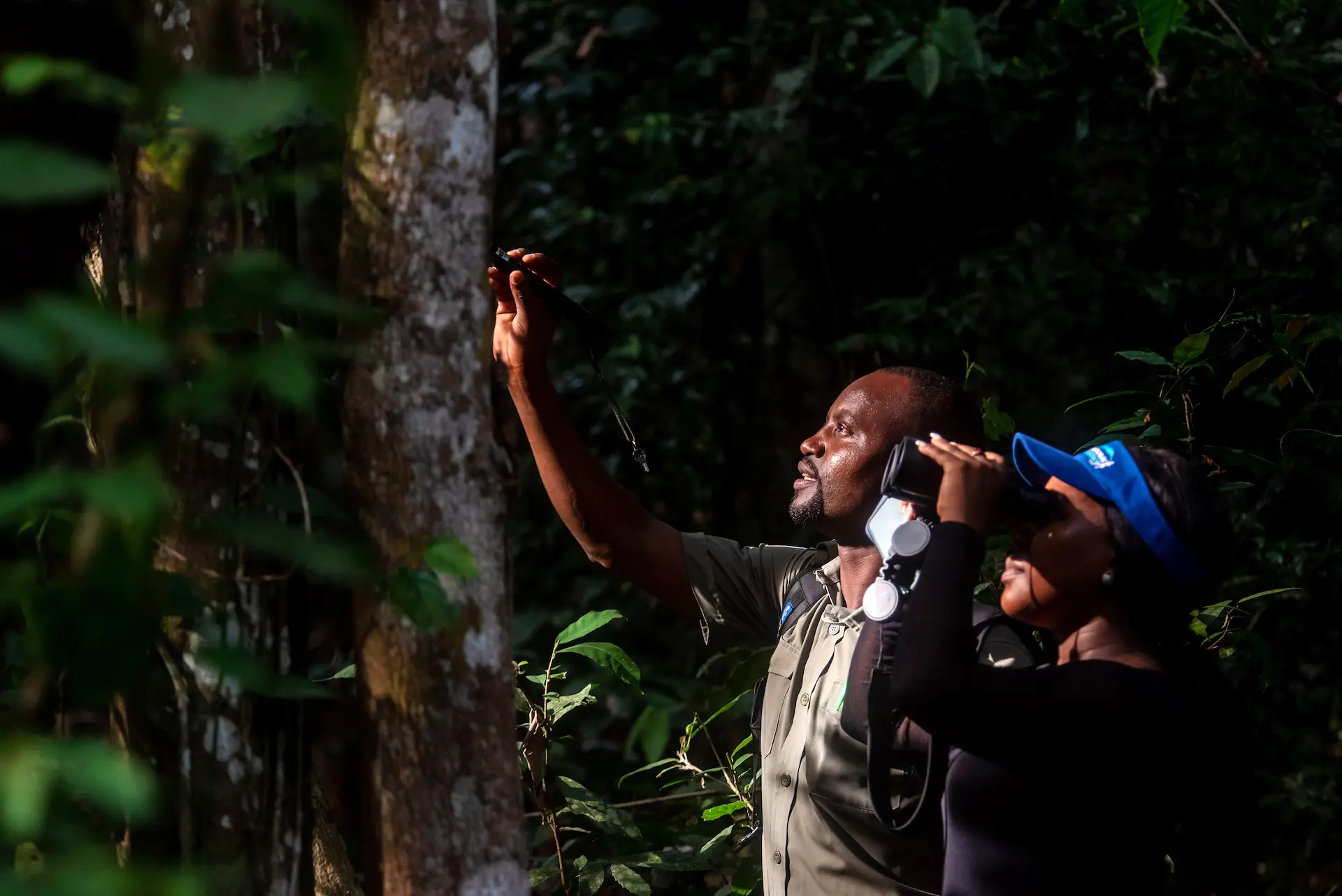
Our Trusted Partners






